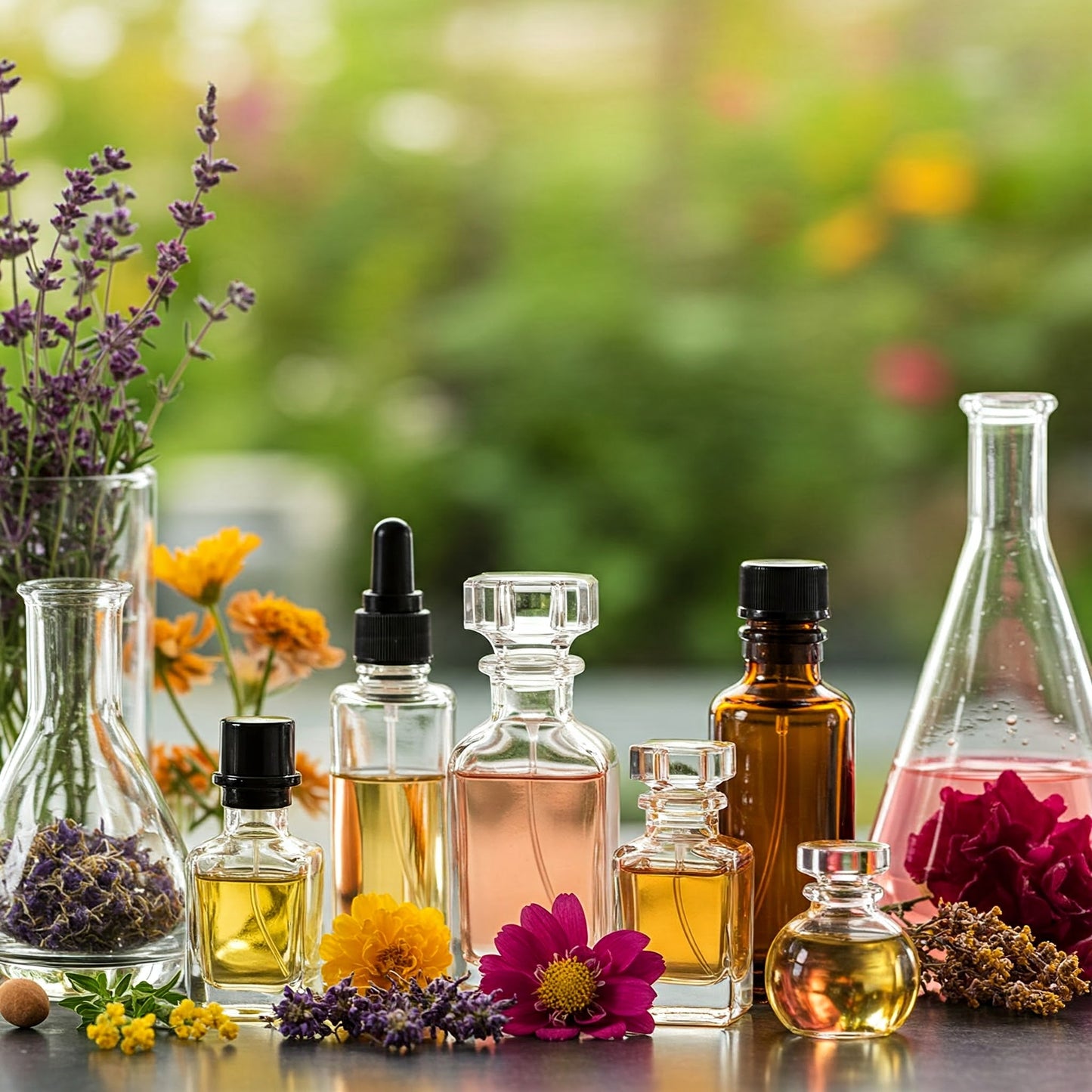The Complete Guide To Perfume Creation: From Beginner to Master
The Complete Guide To Perfume Creation: From Beginner to Master
Unleash your inner perfumer! This comprehensive course guides you through the captivating world of fragrance creation, from beginner basics to advanced techniques. Learn to identify and blend scents, build your own fragrance library, and craft personalized perfumes you and your friends/family will adore. Whether you're a curious novice or an aspiring professional, this course will empower you to create captivating scents that will impress.
This course will include the following:
I. Foundational Knowledge (Beginner Level):
Introduction to Perfumery: History of perfume, basic terminology (notes, accords, fragrance families), the role of a perfumer.
Scent Families: Exploring the main fragrance families (floral, oriental, woody, chypre, fougère, etc.) and their characteristics. Learning to identify common scents within each family.
Fragrance Notes: Understanding top, middle, and base notes and how they interact. Learning about the volatility and longevity of different ingredients.
Basic Perfume Structure: Building simple accords (combinations of two or three scents) and understanding how to create a balanced fragrance.
Raw Materials: Introduction to essential oils, absolutes, and aroma chemicals used in perfumery. Exploring the properties and uses of common ingredients.
Tools and Equipment: Familiarization with the tools of the trade: blotters, beakers, pipettes, scales, etc. Proper handling and safety procedures.
Scent Evaluation: Developing your sense of smell and learning to describe and analyze fragrances. Practicing scent identification and differentiation.
II. Advanced Techniques (Intermediate/Advanced Level):
Perfume Formulation: Creating complex fragrance compositions with multiple notes and accords. Balancing the fragrance pyramid.
Advanced Blending Techniques: Mastering the art of blending different ingredients to achieve desired effects. Understanding the impact of concentration and proportions.
Natural Perfumery: Exploring the use of natural ingredients in perfume creation. Techniques for extracting and preserving natural scents.
Aroma Chemicals: In-depth study of aroma chemicals and their uses in modern perfumery. Understanding the safety considerations associated with aroma chemicals.
Creating Different Perfume Types: Learning to formulate various fragrance types, such as eau de toilette, eau de parfum, and parfum.
Fixatives and Modifiers: Understanding the role of fixatives in prolonging fragrance longevity and modifiers in enhancing specific notes.
Perfume Development Process: From initial concept to final formulation, understanding the steps involved in creating a new perfume.
Scent Layering: Creating personalized fragrance experiences by layering different scents.
III. Practical Application & Projects:
Creating Your Own Perfumes: Guided projects to create perfumes based on specific themes or briefs.
Building a Fragrance Library: Developing a personal collection of scents for reference and inspiration.
Analyzing Existing Perfumes: Dissecting popular fragrances to understand their structure and composition.
Experimentation and Exploration: Encouraging students to experiment with different ingredients and techniques to develop their own unique style.
Perfume Marketing and Branding: Introduction to the business side of perfumery, including marketing, branding, and packaging.
Clones and the role of fragrance clones in today's fragrance market.
IV. Additional Components:
Online resources list: References to youtube channels, websites, and forums for students to share their work, ask questions, and connect with fellow perfumers.
Downloadable Resources: PDFs, worksheets, and other materials to supplement the course content.


